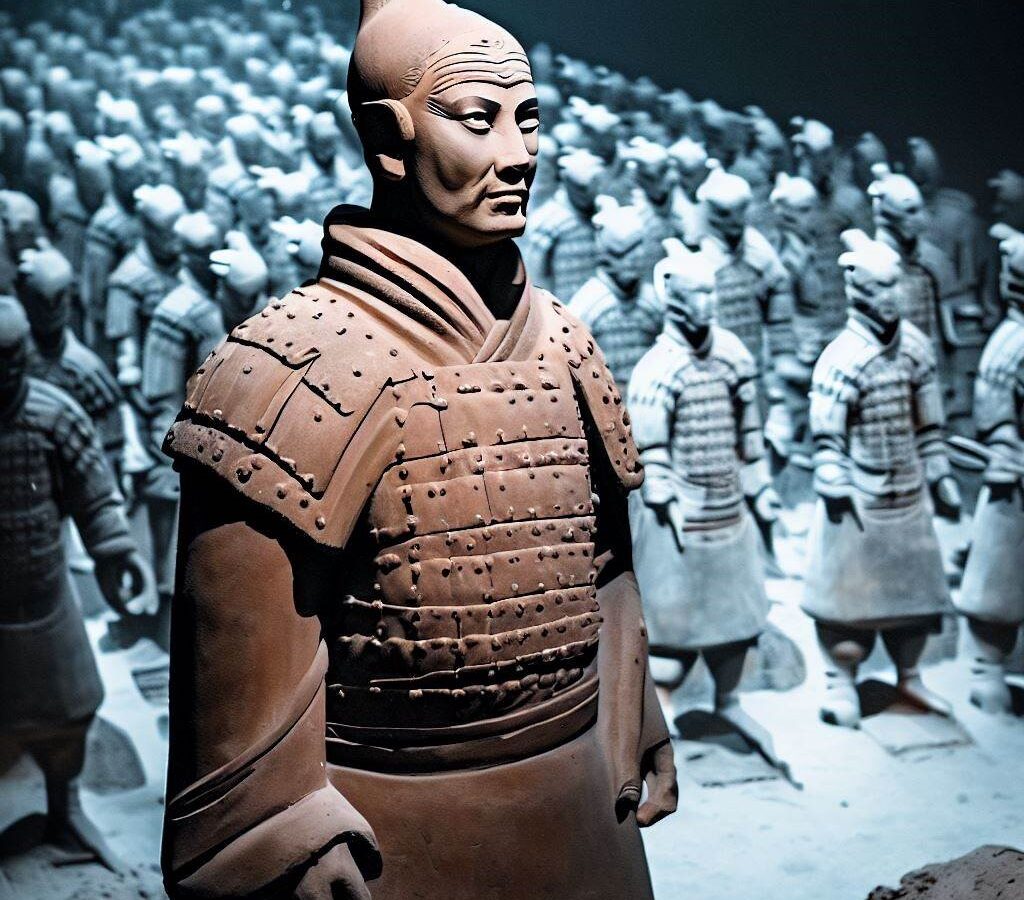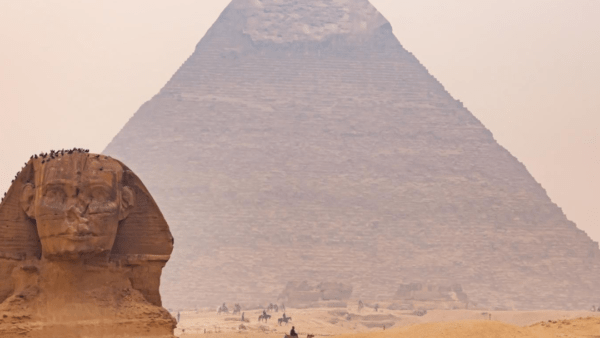The Rise of China’s First Emperor
To truly understand the Terracotta Army, we must first explore the rise to power of the man who commissioned its construction – Emperor Qin Shi Huang. In 221 BC, the King of Qin conquered the remaining warring states to become the first emperor of a unified China. Renowned for his military prowess and centralization of power, Qin Shi Huang kicked off what many consider China’s first golden age. His new Qin Dynasty set the stage for the Terracotta Army like nothing before.
An Army Fit for an Emperor
Qin Shi Huang wanted a grand army to accompany him in the afterlife, one that reflected his military dominance over China. Thousands of laborers were conscripted to begin crafting life-sized terracotta soldiers, horses, and weapons in the emperor’s vast tomb complex near Xi’an. Artisans individually sculpted each warrior to precise detail before applying colorful paints, creating a hyper-realistic illusion. It was no small feat – this literal underground army took years to complete at a scale almost too colossal to believe.
Masterpieces of Military Engineering
Walking amongst the ranks of soldiers today, one can’t help but be amazed at the craftsmanship. Each soldier’s face is uniquely characterized, their armor and weapons carefully designed. Cavalrymen sit astride realistic horses complete with saddles and tack. Even the generals are distinguishable from the lower ranks. The army was posed in battle formation too, ready to mobilize at a moments notice on the emperors command. It’s clear no expense was spared to protect Qin Shi Huang even after death.
A Treasure Trove of Ancient Insights
The Terracotta Army holds untold historical revelations. It offers clues about military strategies, technological advances, and the artistic skill of Qin Dynasty artisans. The sheer scale of the project also underscores Qin Shi Huang’s centralized authoritarian rule. Moreover, the army’s unity symbolizes China’s unification under his reign. Thousands of years later, this archaeological goldmine continues yielding new details about life during this transformative epoch.
A Discovery for the Ages
For over two millennia, the Terracotta Army silently guarded the emperor’s tomb undisturbed. That changed in 1974 when farmers digging a well stumbled upon fragments of a buried warrior. Word spread and soon archaeologists arrived, unearthing one of the greatest finds in history. In the decades since, excavation has revealed over 8,000 soldiers and counting. Now a UNESCO World Heritage Site, the Terracotta Army has entranced over 60 million visitors and remains an enduring marvel of the ancient world.
The Enduring Legacy of Qin Shi Huang’s Marvel
The construction of this subterranean army was an extraordinary feat that seems too grandiose to be real, yet there it lies in silent vigil. Through the Terracotta Army, Qin Shi Huang ensured his dominance lived on even after death. And live on it does – fueling global fascination with ancient China that continues today. Walking amidst these lifelike sentinels from a long-lost world, one cannot help but be forever captivated by the immense vision and legacy of China’s first emperor. The Terracotta Army has become an icon representing so much of what his grand Qin Dynasty achieved.
To learn more about the Terracotta Army and its historical significance, you can visit the Wikipedia page here.

Originally posted 2023-09-10 22:30:00.




